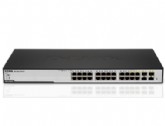Power over Ethernet (PoE) allows the LAN switching infrastructure to provide power to an endpoint (“powered device”) over a copper Ethernet cable. This capability, once referred to as “inline power,” was originally developed by Cisco in 2000 to support emerging IP telephony deployments.
IP telephones need power for operation, and Power over Ethernet supports scalable, manageable power delivery and simplifies IP telephony deployments. As wireless networking emerged, Power over Ethernet began powering wireless devices in locations where local power access did not exist.
While IP telephones and wireless access points are the most intuitive uses for Power over Ethernet, 802.3af standardization of PoE provides power to a new generation of networked-attached devices, including:
- Video cameras
- Point-of-sale devices
- Security access control (card scanners)
- Building automation
- Industrial automation
Cisco offers a comprehensive range of 802.3af-based Power over Ethernet support across the Cisco Catalyst Intelligent Switching portfolio. This includes both 10/100/1000 and 10/100 PoE LAN connections, including a 96-port 10/100 PoE module for the Cisco Catalyst 6500 Switch.
Cisco 802.3af-compliant Power over Ethernet products support pre-standard PoE implementation. These products are backwards compatible with Cisco existing end devices, such as IP telephones and wireless access points.
. They support granular, optimized, scalable power delivery, for more efficient power management.


